This steamed Boston Brown Bread is very moist and delicious due to the steaming method. Steamed breads are flavorful and ultra moist without being gummy or packed with fat. This particular brown bread is made with rye, corn, and whole wheat. It tastes great warm, sliced into rounds. I like it with cream cheese. Serve it for your next cookout with baked beans. It’s wonderful!
Steamed Rye and Maple Brown Bread
Slightly adapted from Beth Hensperger, The Pleasure of Whole-Grain Breads
Makes: two 1-pound loaves
Ingredients:
- 1 cup golden raisins
- 3 tablespoons golden rum
- 1 cup yellow or white cornmeal, preferably stone-ground
- 1 cup whole-wheat or graham flour
- 1 cup medium rye flour
- 1/2 cup unbleached all-purpose flour
- 2 teaspoons baking soda
- 1 teaspoon salt
- 2 cups buttermilk
- 3/4 cup pure maple syrup
- 2 large eggs
Plumping the raisins
Combine the raisins and rum in a small bowl. Set it aside and let stand at room temperature for 1 hour.
Preparing the pans for baking
In the meantime, generously grease two 1-pound coffee cans, or two 4 or 5-cup lidded pudding molds. Line the bottom of the pans with parchment paper.
Tip on using coffee cans as molds
I’ve tried several recipes using coffee cans and the bread always got stuck in the pan because of the ledge at the top. I finally figured out how to get the bread to come out in one piece. I removed the bottom of the coffee can using a can opener and let the bottom fall to the top and rest on the ledge. So, the bottom became the top and vice versa. Now, the bread comes out without getting stuck.
Mixing the Batter
Combine the cornmeal, whole-wheat, rye, and all-purpose flours, baking soda and salt in a large bowl.
In a large liquid measuring cup, combine the buttermilk, maple syrup, and eggs. Stir with a whisk until the liquid ingredients are combined. Pour the liquid ingredients into the dry ingredients and add the raisins and rum. Stir well until evenly moistened.
Preparing to bake
Fill each prepared can or mold no more than two-thirds full.
Steaming the bread
Cover tightly with a lid or with aluminum foil held with thick rubber bands. Place on a rack in a deep pot and add boiling water to reach 1 to 2 inches up the sides of the cans or molds. (I used trivets for my rack. They did just fine)
Cover and adjust the heat to maintain a low simmer. Steam for 2 hours, or until a cake tester inserted into the center comes out clean. Add more boiling water during the steaming if too much has evaporated.
I peaked in to see if it needed more water and the tops had already popped off.
It’s been 2 hours and the loaves are finished steaming.
Bake the breads for 5 minutes
About 20 minutes before the bread finished steaming; preheat an oven to 400 degrees F.
Uncover the breads and place in the oven for no more than 5 minutes to dry slightly.
Cooling the breads
Remove from the cans or molds and cool the loaves on their sides on a rack.
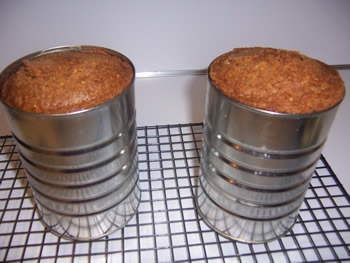
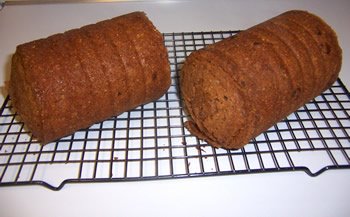
Eating the breads!
Now, it’s time to do the taste test!
This bread was so good, I ate some for breakfast, lunch and dinner. I spread cream cheese on it. So good. Then, I had to go for a run because I ate so many calories!
I brought this bread for a cookout on Sunday along with some homemade baked beans that had been simmering in the crock pot all day. Oh boy! It was a big hit!
Storing the bread
This bread only last a few days before it starts getting moldy. You either need to eat it quickly or freeze it. We ate the first loaf pretty quickly, then I froze the second one. I sliced it before wrapping it up so I can sneak a slice every now and then.
Happy Baking!
Cathy
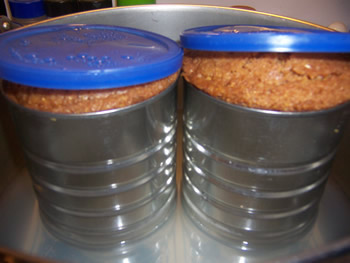
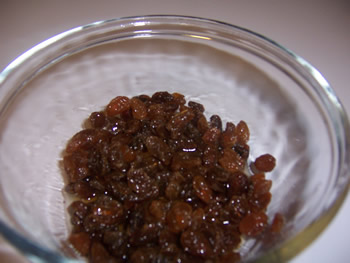
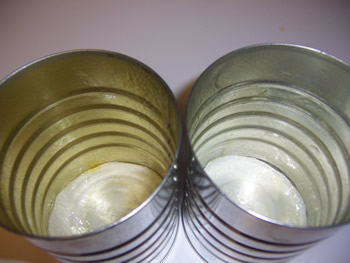
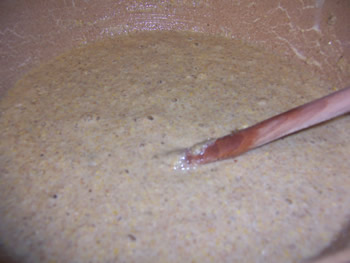
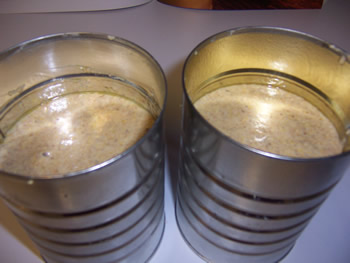
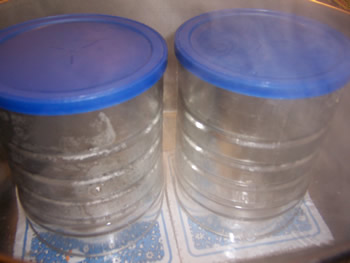
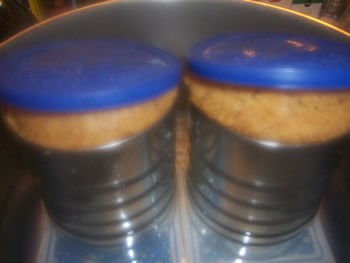
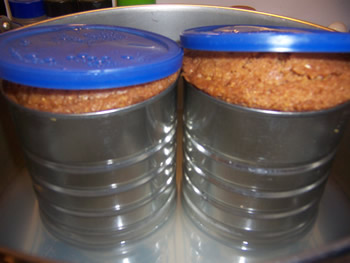
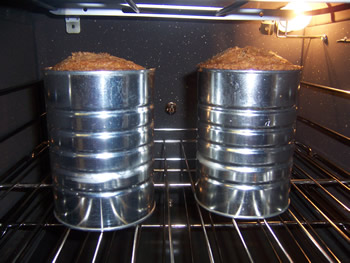
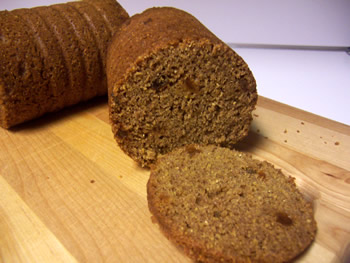
JustMeSuzanneESLtutor says
Looks great. I was just making some regular bread and set the dough in a metal bowl, with a cloth over it, in the top of my large coffee urn filled with hot water to rise. The bowl fits perfectly in the urn, and I have a metal top that would fit perfectly on the bowl. This worked really well to get the dough to rise, except that it seemed it cooked a little bit. So I started wondering if I could steam bread using this method. What do you think?
Cathy (breadexperience) says
Hi Suzanne. For steamed breads, you need to have constant steam for an extended period of time. This method works really well for breads raised with baking powder. It’s fun though and work trying.
JustMeSuzanneESLtutor says
Does the dough, itself, need to have exposure to steam, or does the heat just need to be provided by steam. If I use my coffee urn to steam bread, the steam will not come in contact with the dough; however, it will provide continuous heat for as long as I want. Seems like that might be better to prevent sogginess.
Cathy (breadexperience) says
The dough does not come into direct contact with the steam. You can cover the tops with aluminum foil.
See this post http://breadmakingblog.breadexperience.com/2011/01/togus-steamed-bread-bbd-36.html for another steamed bread.